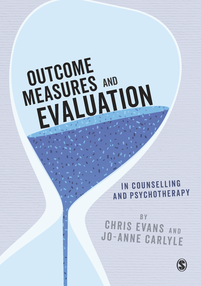From the outset we realised that scores on outcome measures, self-report or rated, must be considered in context and that this makes it vital to have some common core of contextual information.
The CORE-A was the first part of this CORE contextual information framework. It comprises four sides of A4 completed by the practitioner divided into the Therapy Asessment Form (TAF) and the End of Therapy (EoT) form described here, which is completed … as you might guess … at the end of therapy!
The EoT covers the practicalities of the therapy (duration, frequency, modality, format & missed sessions), ending of therapy is coded carefully, the problems are reviewed under the same headings as on the TAF and with the same severity rating scale and are ticked to reflect whether or not the practitioner feels they were focused on in the therapy, risk is re-rated as on the TAF and a section covers coding of benefits of therapy, changes in medication can be recorded and whether or not there will be follow up.
Referencing the CORE-A
As the CORE-A is mainly a context information gathering form completed by practitioners, not a self-report psychometric measure, and as most of the items will have great face validity and inter-rater reliability, there is no conventional psychometric exploration of the instrument and no clear first publication that describes it in great detail. Probably the first fairly detailed use of information from the CORE-A was in:
Evans, C., Connell, J., Barkham, M., Marshall, C., & Mellor-Clark, J. (2003). Practice-Based Evidence: benchmarking NHS primary care counselling services at national and local levels. Clinical Psychology & Psychotherapy, 10, 374–388. http://doi.org/10.1002/cpp.384.
Translation/localisation of the CORE-A
Translation of either part of the CORE-A is not the challenge of translating the self-report measures so our translation standards don’t apply to the CORE-A but the legalities do: you must contact me (CE) and discuss things if you want to translate the CORE-A. We do require that you translate both parts and all the blocks of each, even if we are going to agree that you don’t want to use some blocks locally. The main challenge is really of localisation as a number of variables, mainly on the CORE-EoT, have to be adapted to the locality. Typically the breakdown of ethnicity and of previous service use need careful thought to make sure they are meaningful locally.
Development/future of the CORE-A (EoT)
Unlike the TAF, the data of the EoT is probably not much affected by cultural and service changes since CORE started, and the items are also largely stable across cultures and countries. However, if you believe that changes are needed for your locality then do contact me (CE).
Download
I have been trying to build a new InDesign template for the TAF and EoT as the ones I have are ancient (about 20 years old, miracle they open at all). However, to rebuild the EoT to make translations and changes easy is a nightmare so for now I have given up and just tweaked the PDF:
https://www.coresystemtrust.org.uk/wp-content/uploads/2020/03/CORE-A_EoT.pdf
I am also having problems with my file download plugin hence the direct download there. Depending on your browser that may open directly if you click it, in which case you should be able to download/save the PDF that way, or you may have to right click on it or work out how to select and download it. Let me know if it doesn’t work for you (and if so, please tell me your browser and your operating system or the ‘phone or tablet you are using. Downloading implies you are accepting the licence conditions (see above).
Created for original site 1/1/2015, last updated 16/5/22, page author CE, licence: Attribution 4.0 International (CC BY 4.0) .



